Pawpaw Planting Made Easy: From Seeds to Trees
- November 29, 2024
- 0 comment
The pawpaw plant, scientifically known as Asimina triloba, is one of North America’s most remarkable native fruit trees. Its tropical-like fruit, with creamy, mango-banana-flavored flesh, makes it a standout choice for any garden. Not only does growing pawpaw trees provide you with unique and delicious pawpaw fruit, but these trees also enhance your garden’s aesthetic appeal and contribute to a thriving local ecosystem. Whether you’re interested in organic fruit farming, cultivating edible native plants, or simply adding a high-yield fruit crop to your garden, this guide will walk you through every step from seed selection to mature tree care making it easy for gardeners at any experience level.
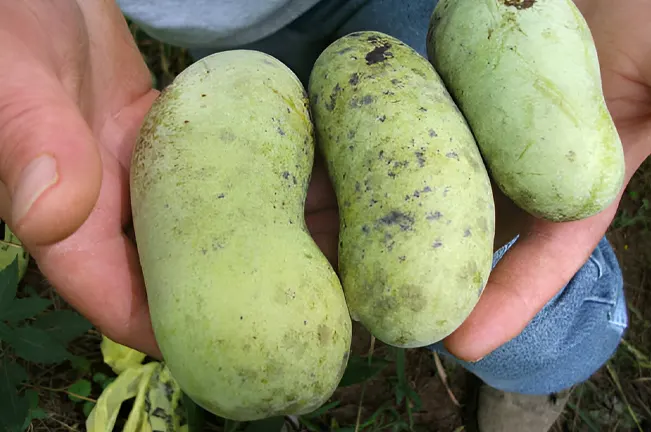
Understanding the Pawpaw Plant and Its Unique Characteristics
The pawpaw tree (Asimina triloba) is a remarkable addition to gardens, especially for those focusing on native fruit trees or organic fruit farming. Native to the eastern United States, this small deciduous tree thrives in USDA pawpaw growing zones 5–9 and can grow up to 30 feet tall, offering both beauty and productivity.
| Common Name | Common pawpaw, pawpaw tree |
| Botanical Name | Asimina triloba |
| Family | Annonaceae |
| Plant Type | Deciduous tree |
| Mature Size | 15–30 ft. tall and wide |
| Growth Rate | Moderate to fast, depending on care and conditions |
| Sun Exposure | Full sun, partial shade, or deep shade |
| Soil Type | Well-drained, rich, and moist |
| Soil pH | Slightly acidic (5.5–7.0) |
| Bloom Time | Spring |
| Flower Color | Maroon, purple |
| Fruit Description | Large, oval-shaped, with sweet, custard-like pulp; flavor resembles mango and banana |
| Pollination | Requires cross-pollination with genetically distinct trees for fruit production |
| Hardiness Zones | USDA zones 5–9 |
| Native Area | North America |
| Wildlife Benefits | Provides food and shelter for birds, insects, and small mammals |
| Uses | Fruit consumed fresh or used in desserts, smoothies, ice cream, or baked goods; ornamental appeal |
| Cultural Significance | Historically used by Native Americans for food and medicinal purposes |
| Propagation | Grown from seeds or through grafting for specific traits |
| Pest Resistance | Generally pest-resistant but can be affected by pawpaw peduncle borers |
| Lifespan | Typically 25–30 years with proper care |
| Toxicity | Some parts are toxic to humans; handle with care |
- Fruits: The pawpaw fruit stands out with its large, oval shape and sweet, custard-like pulp, making it a fantastic choice for fruit crops or home gardens.
- Flowers: Early spring brings deep purple blooms, enhancing your landscape with ornamental charm.
- Growing Conditions: Pawpaw plants flourish in rich, well-draining soil with a pH of 5.5–7. While they prefer partial shade, mature trees adapt well to full sun if the soil remains moist and properly maintained
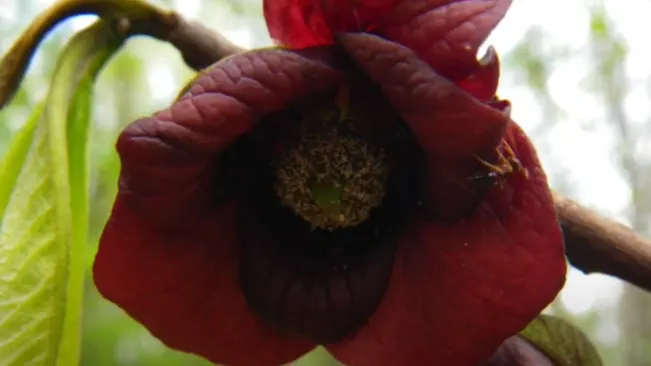
If you’re exploring high-yield fruit crops or planning to grow edible native plants, the pawpaw is an excellent option due to its adaptability and rewarding harvest.
Choosing the Right Pawpaw Seeds for Growing Success
Cultivating a healthy pawpaw plant starts with selecting high-quality seeds. Whether you’re planning a backyard orchard or exploring organic fruit farming, choosing the right seeds is essential for growing success.
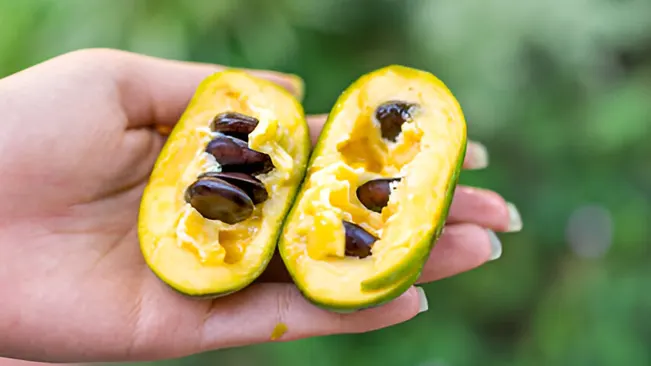
- Selecting Seeds: Always use seeds from fully ripened pawpaw fruit. Look for plump, undamaged seeds to boost germination rates and ensure strong pawpaw tree growth.
- Where to Source Seeds: Opt for seeds from reputable local nurseries, trusted online sellers, or fresh, locally grown native fruit trees. These sources provide reliable genetics crucial for fruit crop success.
- Seed Viability: Perform a float test to determine seed viability. Place seeds in water those that sink are viable, while floating seeds are non-viable and should be discarded.
Starting with viable seeds lays the foundation for a thriving pawpaw tree, ensuring your efforts in organic fruit farming or cultivating high-yield fruit crops are rewarded.
Preparing Pawpaw Seeds: Stratification and Germination
Growing healthy pawpaw plants starts with properly preparing the seeds through stratification. This cold treatment mimics natural winter dormancy, ensuring successful germination for your pawpaw tree. Follow these steps for effective seed preparation:

Step-by-Step Stratification Process
- Gather Materials: Prepare pawpaw seeds, damp sand or peat moss, and a resealable plastic bag. These materials create the ideal environment for stratification.
- Chill the Seeds: Place the seeds in the bag with the damp medium and refrigerate at 32–41°F for 90–120 days. This simulates the cold winter conditions that pawpaw fruit seeds naturally experience in the wild.
- Monitor Moisture: Regularly check to ensure the medium stays slightly moist, as excessive water can lead to seed rot.
Proper stratification prepares your seeds for planting, laying the groundwork for thriving pawpaw trees in your garden or fruit farming efforts. Whether you’re focusing on high-yield fruit crops or expanding into organic fruit farming, this step is essential for cultivating a successful Asimina triloba tree.
Planting Pawpaw Seeds: Step-by-Step Guide
Planting pawpaw seeds at the right time and under ideal conditions is crucial for growing healthy, productive pawpaw trees. Whether you’re adding them to your garden or incorporating them into fruit farming, this guide will help ensure success.
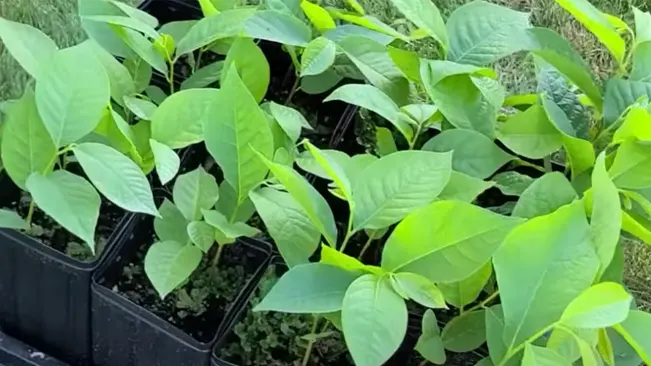
When to Plant
- Early Spring: Plant seeds after the last frost to provide optimal conditions for germination.
- Fall Planting: Sow seeds directly outdoors in autumn to allow natural stratification during the winter months.
Planting Steps
- Choose a Location: Select a site with partial shade and fertile, well-draining soil. Pawpaw plants thrive in environments resembling their natural forest understory habitat.
- Prepare the Soil: Loosen the soil to a depth of 12 inches and enrich it with compost to provide essential nutrients, ideal for these native fruit trees.
- Plant the Seeds: Sow seeds about 1 inch deep, spacing them 8–12 inches apart to ensure proper root and canopy development.
- Water and Mulch: Water thoroughly after planting and add a 2-inch layer of mulch to retain moisture and suppress weeds.
By following these steps, you can cultivate thriving pawpaw trees, adding a unique element to your fruit farming or garden. With proper care, they can become a centerpiece of your efforts in growing native fruit trees or high-yield fruit crops.
Caring for Pawpaw Seedlings to Ensure Growth
Proper care during the early stages is essential for nurturing pawpaw seedlings into thriving pawpaw trees. Follow these tips to promote healthy growth and ensure your efforts yield rewarding results.
Germination Timeline
Pawpaw seeds require patience, typically taking 2–3 months to germinate. During this period, maintaining stable conditions is crucial for successful development.
Care Tips
- Pest Protection: Shield young seedlings from animals and insects using netting or guards. Protecting these native fruit trees ensures your investment in cultivating pawpaw plants is safeguarded.
- Watering: Keep the soil consistently moist but avoid overwatering. The pawpaw plant thrives in conditions that mimic its natural forest habitat moist, well-draining soil.
- Transplanting: When seedlings reach about 6 inches in height, carefully transplant them into larger containers or a permanent outdoor location with enough space for proper root and canopy growth.
By providing the right care, you’ll establish strong, healthy pawpaw plants. These unique trees are a valuable addition to gardens and fruit farming endeavors, offering the promise of productive pawpaw fruit and enhancing your collection of native fruit trees.
Nurturing Mature Pawpaw Trees
Cultivating healthy, productive pawpaw trees requires attention to growth practices and proactive management of challenges. These steps will help ensure your trees yield delicious pawpaw fruit and thrive in any fruit farming or garden setting.
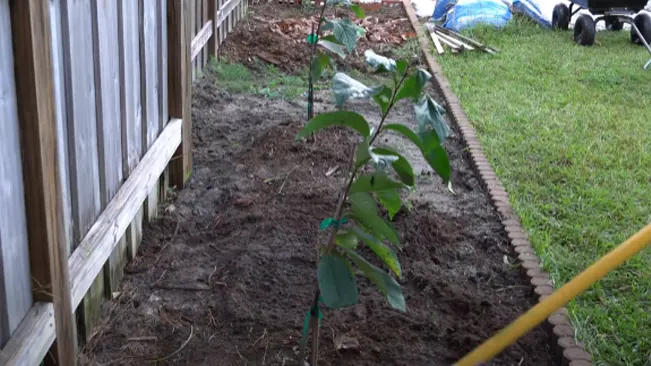
Healthy Growth Practices
- Fertilizing: Apply a balanced 10-10-10 fertilizer in early spring and midsummer to promote robust growth and enhance fruit production. This practice is essential for those focusing on high-yield fruit crops or organic fruit farming.
- Pruning: Prune annually to remove dead or weak branches, improving airflow and encouraging vigorous growth. Pruning also enhances the tree’s ornamental appeal, making it a standout in collections of native fruit trees.
Managing Challenges
- Pests: Keep an eye out for pests like the pawpaw peduncle borer. Utilize eco-friendly solutions such as neem oil or insecticidal soap to control infestations without harming the environment a key consideration in organic fruit farming.
- Environmental Stress: Provide shade for young trees to mimic their natural habitat and ensure consistent soil moisture, particularly during hot or dry periods, to prevent stress.
By following these care practices, your pawpaw plant will flourish, producing its signature sweet, custard-like fruit. Whether you’re building a native fruit trees collection or expanding a fruit crop plan, mature pawpaw trees are a valuable and rewarding addition.
Harvesting Pawpaw Fruit: Tips and Timing
Harvesting pawpaw fruit at the right time and using proper techniques ensures the best flavor and quality from your pawpaw trees. Here’s a guide to get the most out of this unique native fruit.

Timing
- Ripening Season: Pawpaw fruits usually ripen between late summer and early fall, depending on your region and growing conditions.
Signs of Ripeness
- The fruit softens slightly when pressed.
- The skin changes color, transitioning to a yellowish-brown hue.
Harvesting Tips
- Gentle Handling: Twist the fruit gently from the branch to avoid bruising and preserve its creamy texture. The delicate nature of pawpaw fruit makes careful handling essential.
- Minimize Damage: Use soft gloves or a basket to collect fruit and prevent damage during harvesting.
Storage
- Short-Term: Store ripe pawpaw fruit in the refrigerator for up to a week.
- Long-Term: Scoop out the pulp and freeze it for future use in recipes, smoothies, or as a healthy snack.
By harvesting at the right time and storing properly, you can fully enjoy the delicious flavor of pawpaw fruit while making the most of your pawpaw plants. Whether adding it to your garden or fruit farming plan, this native fruit tree offers both productivity and enjoyment.
Benefits of Growing Pawpaw Trees at Home
Growing pawpaw trees in your garden provides numerous advantages, from supporting the environment to enhancing your meals and landscape.
Environmental Benefits
- Eco-Friendly: As native fruit trees, pawpaw trees contribute to local ecosystems by providing habitat and food for wildlife.
- Low-Maintenance: These hardy trees are well-suited for organic fruit farming, requiring minimal intervention while promoting biodiversity.
Culinary Benefits
- Nutritious Fruit: The creamy pawpaw fruit is rich in vitamins, minerals, and antioxidants, making it a healthy addition to your diet.
- Unique Flavor: With a taste that blends mango and banana, pawpaw fruit is perfect for smoothies, desserts, and baked goods, offering versatility in the kitchen.
Ornamental Benefits
- Aesthetic Appeal: The lush green foliage and deep purple flowers of pawpaw plants add striking visual interest to any garden.
- Dual Purpose: Combining beauty with productivity, these trees are ideal for gardeners who value both aesthetics and practicality.
By cultivating pawpaw trees, you can create a garden that is sustainable, beautiful, and fruitful. Whether you’re enhancing your home landscape or diversifying your fruit farming efforts, these native fruit trees offer a blend of environmental and personal benefits.
Conclusion
Cultivating pawpaw trees from seeds is a rewarding journey that brings sweet, custard-like fruits, a closer connection to nature, and environmental benefits. With proper preparation, nurturing, and care, these remarkable native fruit trees can thrive, offering both beauty and productivity to your garden.
Whether you’re growing them for their unique and delicious pawpaw fruit, their ornamental charm, or their role in promoting sustainability, pawpaw plants are an excellent addition to any landscape. Start your pawpaw planting journey today and enjoy the many rewards they bring. Have tips or experiences to share? Let us know in the comments we’d love to hear from you!
Frequently Asked Questions
- Do pawpaws come true to seed?
No, pawpaw trees grown from seed often don’t produce fruit identical to the parent; grafted varieties ensure consistency. - What is the best way to grow pawpaw trees?
Grow pawpaws in well-drained soil, partial shade, and moist conditions; stratify seeds before planting for best results. - How long does it take for a pawpaw tree to produce fruit?
Pawpaw trees typically take 4-8 years to produce fruit when grown from seed, but grafted trees may fruit in 2-3 years. - What can I do with pawpaw fruits besides eating them fresh?
Pawpaw fruits can be used in smoothies, baked goods, ice cream, or preserves for their creamy, tropical flavor. - Are pawpaw fruits an aphrodisiac?
No scientific evidence supports pawpaw fruit as an aphrodisiac, but they are highly nutritious and flavorful. - How big do pawpaw trees grow, and do they require pruning?
Pawpaw trees grow 15-20 feet tall and wide. Minimal pruning is needed, mainly to remove dead or crowded branches. - Can I grow pawpaw trees in containers?
Yes, pawpaw trees can be grown in large containers but require frequent watering and transplanting as they grow. - What are the ideal growing conditions for pawpaw trees?
Pawpaw trees thrive in USDA zones 5-8, with rich, well-drained soil, partial sun, and consistent moisture. - Do pawpaw trees really smell, and how do they attract pollinators?
Yes, pawpaw flowers emit a faint yeast-like odor to attract pollinators like flies and beetles. - Are pawpaw fruits safe to eat, or are there toxins to be aware of?
Pawpaw fruits are safe to eat, but seeds and unripe fruit contain toxins and should not be consumed.

Kristine Moore
Forestry AuthorI'm Kristine Moore, a seasoned garden landscaping professional with over 30 years of experience. My extensive career has been dedicated to transforming outdoor spaces into stunning, sustainable landscapes. With a deep understanding of horticulture, design principles, and environmental stewardship, I have become a respected figure in the field, known for creating harmonious, visually appealing, and eco-friendly gardens. My commitment to excellence and continuous learning in landscaping trends and techniques has solidified my reputation as an expert in garden design and implementation.


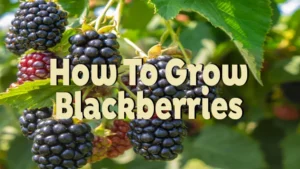

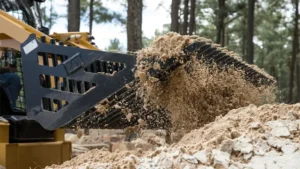




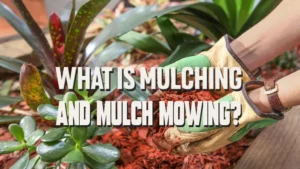



Leave your comment